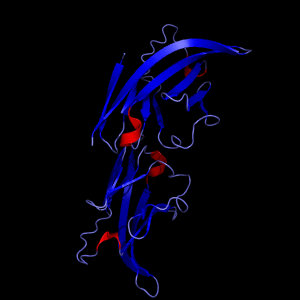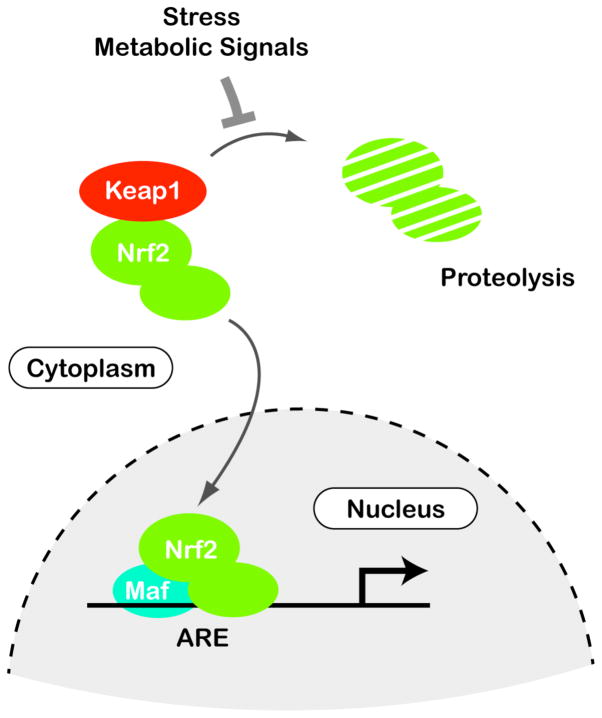 I will be in Las Vegas presenting at one session and moderating another at this symposium. As mentioned in an earlier blog, the symposium is sponsored by the Hawaii Institute of Molecular Education and will take place at the Trump International Hotel. Although the conference is now fully booked, the conference proceedings will be streamed live at 2012 CSIA Las Vegas Webcast.
I will be in Las Vegas presenting at one session and moderating another at this symposium. As mentioned in an earlier blog, the symposium is sponsored by the Hawaii Institute of Molecular Education and will take place at the Trump International Hotel. Although the conference is now fully booked, the conference proceedings will be streamed live at 2012 CSIA Las Vegas Webcast.
The conference schedule (West Coast US time) is:
2012 CSIA LAS VEGAS PROGRAM SCHEDULE
Tuesday, June 5, 2012, 7:45 am-3:40 pm
Wednesday, June 6, 2012, 7:45 am-11:10 am
Scientific Focus:
Mass Spectrometry, Cell Biology, Physiology, Metabolomics, Proteomics, Epigenomics, Stem Cells, Lipidomics, Nutrition
Registration: Invitational
Moderator: Frank A. Williams, M.D.
Program and Technology Director, Executive Editor, Hawaii Institute of Molecular Education, Honolulu, Hawaii
Tuesday, June 5, 2012 (Day 1)
Stem Cells and Pathophysiological Mechanisms of Aging
7:45 am Registration and Continental Breakfast
8:30 am Human Adult Stem Cells Aging–Novel Paradigmes for Rejuvenation
Victoria Lunyak, Ph.D. (35 min)
9:20 am Death and Rebirth of The Oxidative Damage Theory of Aging–About NRF2
Vincent Giuliano, Ph.D. (35 min)
10:05 am Break
10:15 am TO AGE OR NOT TO AGE A Film By Robert Kane Pappas (30 min)
10:45 am Anti-Aging Group Discussion
Vincent Giuliano, Ph.D. (20 min)
Diabetes and Cell Signaling
11:10 am Clinical Utilization of Hops Extracts for Blood Sugar Regulation and Inflammation Control as Tools for Fighting Metabolic Syndrome and Diabetes
Chris Meletis, N.D. (45 min)
12:10 pm Lunch The Hudson Suite (60 min)
1:15 pm Proteomic and Metabolomic Studies of Type 2 Diabetes
Edward Dratz, Ph.D. (35 min)
Cardiovascular Diseases, Inflammation, Cell Signaling, Lipidomics
2:00 pm Bench to Bedside to Better Living: Our Journey From Basic Science Discoveries to Clinical Trials Using Dietary Flaxseed for Heart Disease
Grant Pierce, Ph.D., FACC, FAHA, FAPS, FIACS,FISHR,FCAHS, FRSM (30 min)
2:45 pm Break
2:55 pm The Dr. Herbert Basil Avery Graduate Award Lecture
Proteomic Characterization of High Density Lipoprotein Subspecies
Scott Gordon, B.S.
3:40 pm Adjournment
3:45-5:45 Meet The Experts Reception-location to be announced
Wednesday, June 6, 2012 (Day 2)
Cardiovascular Diseases, Inflammation, Cell Signaling, Lipidomics
7:45 am Registration and Continental Breakfast
8:15 am Metabolic and Functional Relevance of HDL Subspecies
Bela Asztalos, Ph.D., DS.c. (45 min)
9:15 am Novel Strategies to Diagnose and Restore Nitric Oxide Production in Humans
Nathan Bryan, Ph.D. (45 min)
10:10 am Break
10:25 am What’s Really In Your Food? Frank A. WIlliams, M.D. (40 min)
11:10 am Adjournment
My presentation on Death and Rebirth of The Oxidative Damage Theory of Aging–About NRF2 includes a PowerPoint presentation that distills materials from a number of blogs I have written related to the topic.
The original abstract for the presentation is:
The oldest and most venerable of dozens of theories of human aging is the oxidative damage or free radical theory of aging. It goes back some 60 years. The theory deeply implicates free radical damage with inflammatory diseases, rheumatoid arthritis, atherosclerosis, periodontitis, and cancers among others. Further, that theory suggests that taking anti-oxidants could be a practical anti-aging intervention, and millions of people do that now. However, over the years research has led to the realization that free radicals play essential roles in many important physiological processes including cellular energy production, signal transduction, cell-cycle regulation, and immune function. We could not live without free radicals and stamping them out would also kill us. The body has its own complex antioxidant defense system for protection against unwanted free radicals. The newer research suggests that taking antioxidant supplements could both interfere with free radicals when and where they are needed and sabotage the body’s own natural antioxidant defense system. Taking antioxidant supplements could therefore be dangerous or life-shortening. The free radical theory of aging in its original form no longer makes sense.
 Discovery of the Keap1-Nrf2 pathway has provided an entirely new perspective on both the free radical theory of aging and taking antioxidant supplements. The pathway acts on dozens or hundreds of genes activating the body’s own antioxidant defense system, activating stress-protective genes and inhibiting the expression of NF-kappaB and other inflammatory cytokines. The “antioxidants” that do provide demonstrable health benefits, like curcumin, green tea, fish oil and resveratrol, do so not by direct chemical antioxidant action as once thought. Instead, they act primarily by activating the Keap1-Nrf2 pathway and exercise their actions by activating multiple genes and associated pathways. Among the pathways the appear to be involved are Keap1-Nrf2, AMPK, PI3-kinase, AKT, P53, mTOR, MAPK, PPAR-gamma, FoxO/DAF-16, the GH-IGF axis, P16(Ink4a), SIRT1, telomerase, Klotho and NF-kappaB. Nrf2 has attracted great research interest as being a possible gateway for prevention or cure of multiple diseases ranging from neurological and cardiovascular disorders to cancers, with Pubmed.org showing 2,371 Nrf2- research-related publications. — A new oxidative damage theory of aging in which Nrf2 gene activation is in place, alive and thriving. The author has recently published three extensive review-type articles on Nrf2 and will report on the major up-to-the-minute research regarding Nrf2, its relationship to inflammatory diseases, implications for aging science, and possible Nrf2-based interventions that could prolong human lifespans. My recent publications related to Nrf2, all published on my blog www.agingsciences.com are:
Discovery of the Keap1-Nrf2 pathway has provided an entirely new perspective on both the free radical theory of aging and taking antioxidant supplements. The pathway acts on dozens or hundreds of genes activating the body’s own antioxidant defense system, activating stress-protective genes and inhibiting the expression of NF-kappaB and other inflammatory cytokines. The “antioxidants” that do provide demonstrable health benefits, like curcumin, green tea, fish oil and resveratrol, do so not by direct chemical antioxidant action as once thought. Instead, they act primarily by activating the Keap1-Nrf2 pathway and exercise their actions by activating multiple genes and associated pathways. Among the pathways the appear to be involved are Keap1-Nrf2, AMPK, PI3-kinase, AKT, P53, mTOR, MAPK, PPAR-gamma, FoxO/DAF-16, the GH-IGF axis, P16(Ink4a), SIRT1, telomerase, Klotho and NF-kappaB. Nrf2 has attracted great research interest as being a possible gateway for prevention or cure of multiple diseases ranging from neurological and cardiovascular disorders to cancers, with Pubmed.org showing 2,371 Nrf2- research-related publications. — A new oxidative damage theory of aging in which Nrf2 gene activation is in place, alive and thriving. The author has recently published three extensive review-type articles on Nrf2 and will report on the major up-to-the-minute research regarding Nrf2, its relationship to inflammatory diseases, implications for aging science, and possible Nrf2-based interventions that could prolong human lifespans. My recent publications related to Nrf2, all published on my blog www.agingsciences.com are:
The pivotal role of Nrf2. Part 2 – foods, phyto-substances and other substances that turn on Nrf2
The second session I am involved with consists of a) a 30 minute showing of a distilled version of Robert Pappas’ film  TO AGE OR NOT TO AGE, cut specifically to raise a number of provocative scientific and social questions regarding aging, and b) an open discussion I will moderate among symposium participants regarding these and related questions concerned with aging. I am looking forward to a lively and interesting session.
TO AGE OR NOT TO AGE, cut specifically to raise a number of provocative scientific and social questions regarding aging, and b) an open discussion I will moderate among symposium participants regarding these and related questions concerned with aging. I am looking forward to a lively and interesting session.
I hope you can tune in! And comments on the presentations are welcome in this blog.
Vince


Hello,
I have been following your blog entries for a few months now and have found them very promising. During your presentation today, I had the chance to interact with your wife via chat lol. We had a hard time hearing you because of some technical glitch that created this echo effect and that small projector issue you encountered, but regardless, you did great! I promised her to shoot you an email but I cannot find an email address. Do you mind if I get it? Also, when you mentioned in one of your blogs that you were 82 (or close), I didn’t think you were serious. But dang, how do you still have hair? Those are some lucky genes you’ve inherited with a mixture of healthy lifestyle. You still have 20 years before you beat Albert Hoffmann hahahaha.
~Ken
Hi KoolK3n, Ken:
Great you had a chance to interact with Melody. See is mwinnig@comcast.net As for the conference, the video capture and recording was excellent, but for webcasting depended in the hotel wireless system where we shared bandwidth with everybody else on the 64th floor. Not at all a good idea.
The Hawaii Institute for Molecular Education does plan to restream the video for the entire conference as well as archive it online. When this will happen I don’t know. I will somehow announce it whan I find out.
Yeah, on the calendar clock I am indeed 82, probably around 65 in terms of my current epigenetic state. Generally good health and a lot of energy, and yeah, I am looking forward to another 30 years in this longevity career. Not terribly much hair though, a problem that might be overcome if and as I figure out how to rejuvinate my hair stem cell population.
Vince